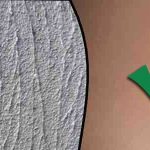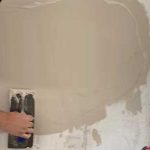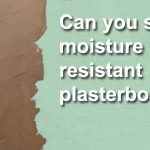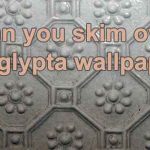Easifill is a great product when it comes to repair work and filling small areas. It is a versatile product that can be used for both bulk fill and finishing work.
It is also used for dry lining. This is a process where it is used fill joints in tapered edge plasterboards. As well as other gaps and fixing holes.
It is easy to apply, and you can get a reasonably smooth finish with a jointing knife or a plastering trowel. Once the filler is dry, it can be sanded to a perfectly smooth finish. This means it can be used to smooth and finish a wide variety of surfaces and repair issues.

Whilst Easifill is a fantastic product for small areas, such as filling joints in plaster board, it is not intended for skimming entire surfaces. In theory you could. However, the surface will need sanding once it dries, and even then, it would be difficult to get a perfect finish over an entire wall.
If you want to skim an entire wall or ceiling, you should be using a plaster that has been made for that purpose. This would include products like multi finish or board finish.
Can you finish entire walls with Easifill?
This is a different question to skimming, and the answer is yes you can. If you are drylining, using tapered edge boards, then Easifill can be used as your primary filler and finishing compound.
This means, it can be used for all plasterboard joints, screw holes, gaps, and internal and external corner joints.
British gypsum state on their own website, that Easifill can be used for bulk filling and finishing work. So it is an all-round product in that regard.
You can dry line and finish entire plaster boarded rooms with a combination of jointing tape and Easifill.
How to use Easifill
For plasterboard joints, you would initially apply the joint filler and bed the jointing tape in, smoothing and covering as you go. The drying time for Easifill is around 2.5 hours, and then it is ready for a second coat.
Once dry, you can remove any of the raised points in the filler, by scraping the surface with your trowel, or jointing knife. Then it is ready to finish with a final coat of Easifill.
Finally, once it is completely dry you can sand to a perfect smooth finish. If you do a good job, the joints should be completely invisible. This would give a very similar quality of finish to a skimmed wall once decorated.
Filling straight edged joints in the plasterboard can be more of a challenge. This is because, these joints are not tapered. In this case, you have to build them out slightly and then taper the Easifill over a wider distance. However, if this is done well, it can also provide a seamless finish.
Therefore, an entire room (walls and ceiling) could be finished with Easifill and there would be no need to skim.
Once the Easifill is dried and sanded, it is ready to apply a mist coat and then paint. Alternatively, you could use another British Gypsum product called Drywall Primer. This will also prepare the surface for your first coat of paint.
Easifill and drylining vs Skimmed plaster
As we mentioned, you can dry line an entire room of plasterboard with Easifill. Therefore, it is a potential alternative to skimming wet plaster.
So, assuming you have an entire room to plaster, which is the best option?
The truth is it will depend. Skimming the entire room is arguably the better-quality option. It also provides slightly better thermal and acoustic insulation.
However, it Is not a DIY project. Good plasterers are highly skilled, and a good job won’t be cheap.
There are also some issues with skimming wet plaster. Firstly, it’s wet, this means you are bringing a lot of moisture into a property, which needs to be dried and extracted correctly. Otherwise, you could face issues with condensation and even mould.
Also, it is quite messy. Initially there is wet plaster to contend with, which can cause a lot of mess. Then following the work, you have lots of dust to deal with. This can be quite persistent, even after thorough cleaning.
The moisture in the plaster can also cause issues if it dries too quickly, and small hairline cracks are quite common.
Dry lining on the other hand, is going to be quicker than skimming. it will also cause less mess, as you are using far fewer wet materials.
And finally it is easier. This means it is a project that could be accomplished by a competent DIY’er.
Essentially, it is a decision between a job that is slightly higher quality. Versus another job, where the finish is not quite as good, but the work is easier and cheaper to do.
I should also point out, that drylining doesn’t give a bad finish at all. In fact it can still give a very good finish. Its just not as good as finished plaster.
Conclusion
You definitely shouldn’t be trying to skim a wall with Easifill, that is not what this product is designed for. If you do need to skim a surface, then your best products are either multi finish, or board finish.
Easifill is a much better product for filling and finishing small areas. As a result it is a great option for dry lining, and the finished result can rival the quality of a skimmed wall.




